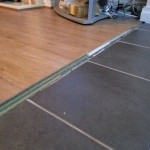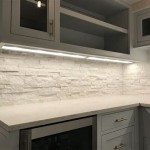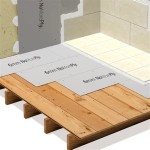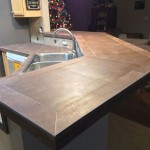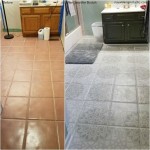How to Lay Ceramic Tile Around Kitchen Sinks and Faucets
Laying ceramic tile in a kitchen, particularly around sinks and faucets, presents a unique set of challenges compared to tiling a simple floor or wall. The irregular shapes, the need for precise cuts to accommodate plumbing fixtures, and the constant exposure to water demand meticulous planning and execution. This article provides a comprehensive guide to successfully installing ceramic tile around kitchen sinks and faucets, ensuring a durable and aesthetically pleasing result.
Planning and Preparation: The Foundation for Success
Before commencing any actual tiling work, a thorough planning stage is crucial. This stage involves accurate measurements, tile selection, an evaluation of the existing substrate, and the gathering of the necessary tools and materials. Neglecting this initial phase can lead to costly errors and a less-than-satisfactory final product.
First, measure the area to be tiled with precision. This includes the backsplash area surrounding the sink, any countertops directly adjacent to the sink, and the distance between the sink and the surrounding walls or cabinets. Accurate measurements will inform the tile purchase and minimize waste. Create a detailed layout plan on paper. This plan should illustrate the placement of full tiles and the location of any cuts required to fit around the sink, faucet, and any other obstructions.
Selecting the appropriate ceramic tile is paramount. Consider factors such as the tile's durability, water resistance, and aesthetic appeal. For areas frequently exposed to water, such as around a kitchen sink, choose tiles with a low water absorption rate (impervious or vitrified tiles). Also, consider the size of the tile in relation to the area being tiled. Smaller tiles often offer more flexibility when navigating complex shapes and curves, while larger tiles can create a more seamless look in larger areas. Ensure the selected tile complements the overall kitchen design and color scheme.
The substrate, or the surface to which the tiles will be adhered, must be clean, level, and structurally sound. For drywall, ensure it is moisture-resistant (often referred to as "green board" or cement board). If the existing surface is painted or coated, it may need to be roughened or primed to ensure proper adhesion of the tile adhesive. Inspect the substrate for any cracks, holes, or unevenness. Repair these imperfections with appropriate patching compounds before proceeding. Failure to properly prepare the substrate will compromise the longevity and appearance of the tile installation.
Gather all necessary tools and materials before starting the tiling process. This includes: ceramic tiles, tile adhesive (thin-set mortar), grout, a notched trowel, a wet saw or tile cutter, a grout float, a sponge, a bucket, safety glasses, gloves, a measuring tape, a pencil, a level, and spacers. Having all materials readily available will streamline the process and prevent delays.
Cutting and Fitting Tiles Around the Sink and Faucet
The most challenging aspect of tiling around a kitchen sink and faucet is accurately cutting the tiles to fit the complex shapes and curves. Precise cuts are essential for a professional and aesthetically pleasing finish. Several techniques can be employed to achieve these cuts, depending on the complexity of the shape and the available tools.
For straight cuts, a wet saw is the preferred tool. A wet saw uses a diamond blade and a constant stream of water to prevent the tile from overheating and chipping during the cutting process. When using a wet saw, always wear safety glasses and follow the manufacturer's instructions. Measure the required cut carefully and mark the tile with a pencil. Guide the tile slowly and steadily through the blade, ensuring a clean and accurate cut.
For curved cuts, such as those required to fit around the sink or faucet base, a tile nipper or a specialized hole saw attachment for a drill can be used. A tile nipper allows you to gradually chip away small pieces of the tile to create a curved shape. This method requires patience and precision. Alternatively, a hole saw attachment can be used to create circular cuts. Choose a hole saw with a diameter slightly larger than the faucet base to allow for grout lines.
Before applying adhesive, dry-fit the cut tiles around the sink and faucet to ensure a proper fit. This allows you to identify any areas that require further adjustment. Make any necessary corrections before proceeding to the next step. It is better to make small adjustments iteratively than to adhere a poorly fitting tile.
When dealing with tight corners or intricate shapes, consider using a template. Create a template out of cardboard or paper that accurately reflects the shape you need to cut. Trace the template onto the tile and use a wet saw or tile nipper to make the cut. This technique can help to reduce waste and improve accuracy.
Applying Adhesive, Grouting, and Sealing
Once the tiles are cut and dry-fitted, the next step is to apply the tile adhesive (thin-set mortar) to the substrate. Thin-set mortar is a cement-based adhesive specifically designed for adhering tiles to various surfaces. Proper application of thin-set mortar is critical for ensuring a strong and durable bond between the tiles and the substrate.
Mix the thin-set mortar according to the manufacturer's instructions. Ensure the mixture is a smooth, creamy consistency. Avoid adding too much water, as this can weaken the adhesive. Using a notched trowel, spread the thin-set mortar evenly over the prepared substrate. The depth of the notches on the trowel will determine the thickness of the mortar bed. Hold the trowel at a 45-degree angle to the surface and apply consistent pressure. Do not apply thin-set to a large area at once; work in small sections to prevent the mortar from drying out before the tiles are set.
Carefully place the tiles onto the thin-set mortar, pressing firmly to ensure good contact. Use tile spacers to maintain consistent grout lines between the tiles. This ensures a professional and uniform appearance. Periodically check the level of the tiles with a level to ensure they are aligned correctly. Any unevenness can be adjusted by gently tapping the tiles with a rubber mallet.
Allow the thin-set mortar to cure completely, according to the manufacturer's instructions. This typically takes 24 to 48 hours. Once the mortar is cured, remove the tile spacers and prepare to grout the tiles. Grout fills the spaces between the tiles, providing a water-resistant seal and enhancing the overall appearance of the tiled surface.
Mix the grout according to the manufacturer's instructions. Apply the grout to the tiled surface using a grout float, pressing it firmly into the grout lines. Work in small sections, ensuring all the grout lines are completely filled. Remove excess grout from the tile surface with a damp sponge. Rinse the sponge frequently to avoid smearing grout residue. After the grout has partially dried (usually after 15-30 minutes), polish the tile surface with a clean, dry cloth to remove any remaining grout haze.
Allow the grout to cure completely, according to the manufacturer's instructions. This typically takes 24 to 72 hours. Once the grout is cured, apply a grout sealer to protect the grout from water and stains. Grout sealer penetrates the grout pores, creating a water-resistant barrier. Apply the sealer according to the manufacturer's instructions. Regular application of grout sealer will help to maintain the appearance and longevity of the tiled surface.
Finally, caulk the perimeter where the tile meets the sink or countertop. This will provide a watertight seal and prevent water from seeping behind the tiles. Use a mildew-resistant caulk specifically designed for kitchens and bathrooms. Apply the caulk in a smooth, even bead and smooth it out with a wet finger or a caulk smoothing tool. Wipe away any excess caulk with a damp cloth.

Kitchen Tile Basics Installing Around A Sink

Installing Tile Countertops Backsplash Family Handyman

Pro Tips For Choosing And Installing The Perfect Backsplash Tile Rubi Blog Usa

Top 5 Kitchen Layout Ideas And Tile Designs For Perfection

Kitchen Tile Makeover Sarah Joy

How To Install A Drop In Sink Professionally Ge Sealants

Tips For Installing A Kitchen Vinyl Tile Floor Merrypad

How To Install A Tile Floor In Your Bathroom Dumpsters Com

How To Seal A Kitchen Or Bathroom After Tiling Walls And Floors

Adding Floor Tiles Under Your Kitchen Sink Home Staging In Bloomington Illinois
Related Posts


